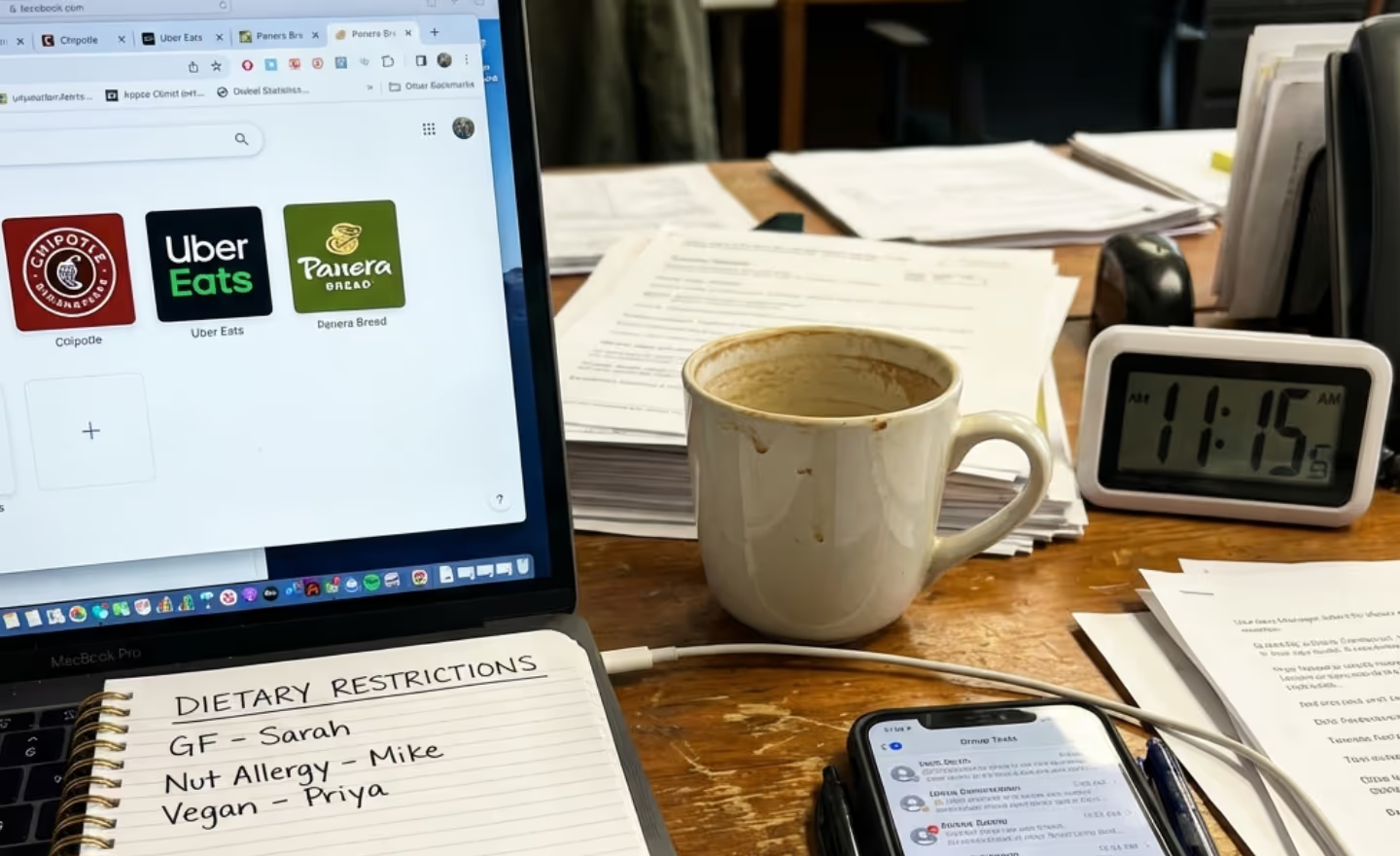It is not a stretch to say that collaboration is essential for organizational success. However, the shift to remote and hybrid work models has posed new challenges for cross-functional teamwork. It is now extremely important to understand the importance of fostering collaboration within your teams. In this post, we explore how providing meals to employees can significantly enhance collaboration opportunities and contribute to a thriving workplace.
The Current State of Collaboration
Gone are the days of water-cooler chats and impromptu brainstorming sessions in the office. Virtual meetings have become the norm, but they lack the spontaneity and camaraderie of face-to-face interactions. Remote work has also led to siloed teams, hindering cross-functional collaboration. According to a recent NordVPN Teams study, employees are working longer hours, blurring the boundaries between work and personal life.
Key Challenges to Overcome
- Active Leadership: Effective collaboration requires active leadership. As HR and facilities managers, you play a crucial role in fostering cross-functional connections. Encourage open communication channels and lead by example.
- Silos and Remote Work: Remote and hybrid work setups can inadvertently create silos. Teams may focus solely on their tasks without interacting with other departments. It’s essential to break down these barriers and promote collaboration across the organization.
- The “Great Resignation”: The pandemic has reshaped the workforce, leading to the “Great Resignation.” Employees seek meaningful work experiences, and collaboration plays a vital role in retaining talent.
Creating Collaboration: Employee Meals Matter
1. Physical Well-Being
Nutritious meals directly impact employee well-being. When employees are well-fed, they have more energy, better focus, and improved overall health. A balanced diet positively influences productivity and collaboration.
2. Social Interaction
Shared meals provide opportunities for informal conversations. Whether it’s a team lunch or a virtual coffee break, these moments foster connections beyond work tasks. Employees bond over food, leading to stronger relationships.
3. Team Bonding
Eating together builds camaraderie. When teams share meals, they learn about each other’s interests, hobbies, and backgrounds. Trust grows, and collaboration becomes more natural. Consider organizing team-building lunches or themed potlucks.
Case Study: Multi Media
Multi Media implemented a weekly lunch program. Teams enjoyed company sponsored meals, where they caught up with coworkers and made new connections. The result? Improved collaboration and morale which leads to a more cohesive workforce.
Strategies for Enhancing Collaboration
- Leverage Employee Strengths: Identify individual strengths and encourage teamwork based on complementary skills. Cross-functional projects benefit from diverse perspectives.
- Collaborative Goals: Shift from competitive performance ratings to collaborative goals. Reward teamwork and recognize joint achievements.
- Values Alignment: Ensure employees understand and align with the company’s core values. Shared values create a sense of purpose and encourage collaboration.
- Effective Communication Tools: Invest in tools that facilitate communication among remote and hybrid teams. Video conferencing, chat platforms, and project management software bridge the gap.
Improved Collaboration with Meal Benefits
Collaboration isn’t just a buzzword; it’s the lifeblood of successful organizations. HR and facilities leaders are seeing the benefits of prioritizing employee well-being by providing access to nutritious meals. Remember, a well-fed team is more likely to be a collaborative team. Encourage spontaneous cross-functional interactions, celebrate shared successes, and watch your company thrive with meal benefits.
If you are ready to explore your options for feeding your teams, interact with our Live Chat or submit your company’s details to our getting started page. We would love to hear from you and help you create a customized plan that suits your companies specific needs and employee preferences.






